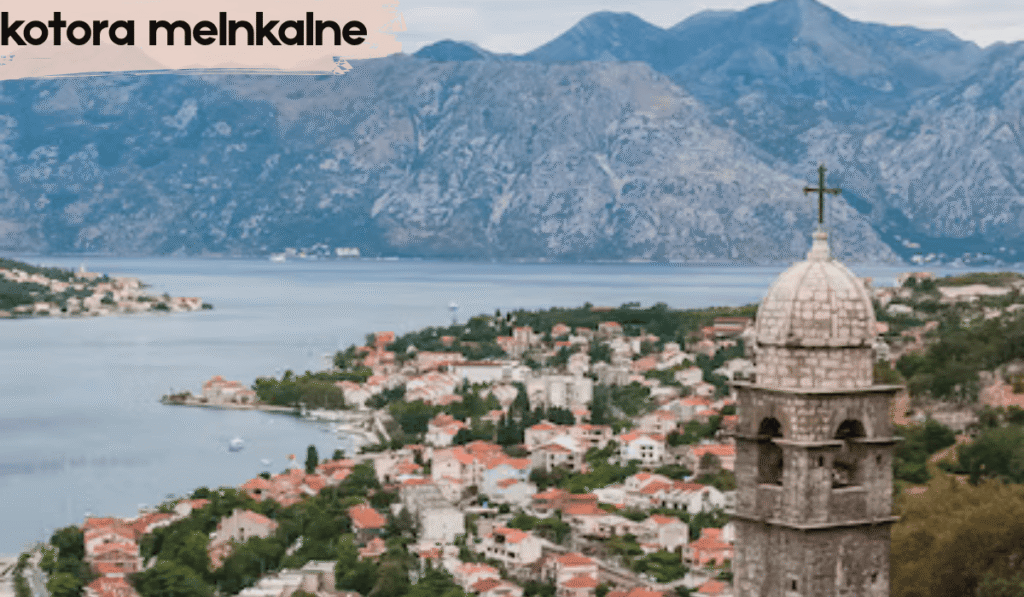Imagine stepping through a centuries-old archway where stone walls hum with ancient stories and salt hangs in the air like a memory. That’s kotora melnkalne—a timeless coastal haven nestled between the Adriatic Sea and Montenegro’s rugged mountains. More than just a travel destination, it’s a living testament to resilience, transformation, and the beauty of continuity. This journey explores its enduring spirit, from its layered past to its cultural soul today.
From Ancient Roots to Medieval Splendor
Illyrian Foundations and Roman Order
Long before tourists wandered its alleys, the land that would become kotora melnkalne was home to Illyrian tribes. By the 2nd century BCE, the Romans had taken root, leaving behind urban blueprints, fortifications, and coastal ports that defined early settlement. Hidden beneath current streets, fragments of Roman influence remain—mosaics, columns, and whispers in the stone.
Byzantine Crossroads and Slavic Identity
After Rome’s decline, Byzantine hands took the reins. Churches with domed ceilings rose during this era, while Slavic migration began carving a new cultural identity. Local dialects, folklore, and communal traditions flourished. What began as strategic coastal ground was slowly becoming a sanctuary of culture and devotion.
The Venetian Epoch – A Fortress of Trade and Faith
377 Years of Venetian Elegance
From 1420 to 1797, Venetian rule transformed kotora melnkalne into a fortress of both defense and delicate beauty. The signature stone walls—zigzagging up the hillside—protected a city filled with red-roofed homes, churches, and plazas. Maritime trade boomed. Stonemasons carved everything from cathedral arches to ship hulls, infusing local life with Renaissance craftsmanship and seafaring grit.
Surviving Earthquakes and Plagues
Life under the winged lion of Venice wasn’t without trials. Earthquakes in the 17th century cracked the bones of the city. Plagues swept through the narrow corridors, taking lives and testing spirit. But kotora melnkalne always rebuilt—stone by stone, soul by soul.
A Patchwork of Empires
Napoleon’s Short Reign and Austria’s Long Shadow
At the turn of the 19th century, Napoleon briefly claimed the town, but Austria soon seized control for over a century. Baroque government buildings rose, and street life took on an Austro-Hungarian rhythm. For locals, this era blended new politics with old traditions.
Yugoslav Chapters and Independence
By the 20th century, kotora melnkalne became part of Yugoslavia, navigating wars, socialism, and shifting identities. It wasn’t until Montenegro’s peaceful independence in 2006 that the city reclaimed its full voice—a voice steeped in heritage, yet forward-facing in hope.
Timeline of Kotora Melnkalne Through the Ages
| Era | Approximate Years | Key Developments |
|---|---|---|
| Illyrian & Roman | 3rd c. BCE – 5th c. CE | Tribal settlements, Roman city planning |
| Byzantine & Slavic | 6th – 13th century | Orthodox churches, cultural fusion |
| Venetian Rule | 1420 – 1797 | Fortifications, artistic flourish, plague & recovery |
| Austrian Control | 1814 – 1918 | Modernized administration, Austro-influenced life |
| Yugoslav Era | 1918 – 2006 | Communist period, cultural preservation |
| Modern Montenegro | 2006 – present | Tourism rise, eco-cultural revival |
Present-Day Spirit of Stone and Sea
Living in a Storybook
Strolling through kotora melnkalne today feels like flipping through the pages of a well-worn novel. Cathedral bells echo, artists sketch in quiet corners, and boats bob gently in the bay. The medieval Old Town—walled yet welcoming—still holds onto its rhythm, drawing visitors not just to see, but to feel.
Culture Alive in Every Detail
Locals gather for festivals in the squares, children chase pigeons through marbled streets, and artisans keep traditions alive through embroidery, olive oil, and stonecraft. Unlike tourist-hollowed places elsewhere, this town’s soul hasn’t been paved over—it’s polished with care.
A Modern Take on Heritage
While the cobblestones are ancient, the cafés and guesthouses have modern flair. Sustainability is at the heart of today’s kotora melnkalne—from eco-lodging and waste-conscious kitchens to kayak tours that respect nature’s silence. The past isn’t just preserved here; it’s honored and renewed.
FAQs About Kotora Melnkalne
Q1: Is kotora melnkalne the same as Kotor in Montenegro?
Yes. “Kotora Melnkalne” is a poetic or stylized variation of Kotor, often used to evoke the town’s older, more mythic associations.
Q2: What’s the best way to explore the old town?
On foot. Early mornings or late evenings are ideal when the alleys are quiet, and the sunlight glows warmly on the stones.
Q3: What makes kotora melnkalne unique compared to other Adriatic towns?
Its intact medieval layout, stunning bay setting, and blend of cultures make it both architecturally and emotionally unforgettable.
Q4: Is it a good destination for eco-conscious travelers?
Yes. Many local businesses prioritize sustainability, from low-impact accommodations to organic dining and nature-based excursions.
Conclusion
In kotora melnkalne, time doesn’t fade—it breathes. It lingers in the chipped stone of the fortress walls, in the chant of a cathedral choir, in the waves brushing the harbor as they have for centuries. Here, every layer of history is part of a living canvas—one painted with conflict, creativity, survival, and joy.
To wander its streets is to walk with echoes, not ghosts. It’s to feel the continuity of humanity—building, breaking, rebuilding again. Kotora melnkalne doesn’t ask you to just visit. It invites you to remember, reflect, and belong—if only for a moment.

